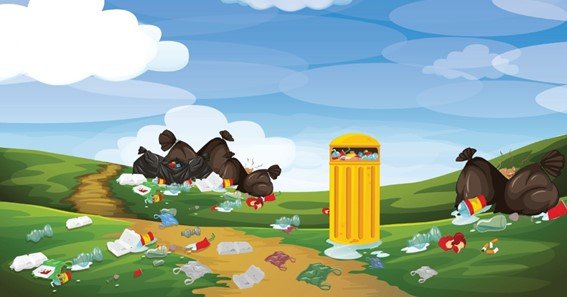Soil pollution occurs when harmful chemicals, industrial waste, and other pollutants degrade the quality of the soil, affecting its ability to support life. These pollutants can come from various sources such as industrial activities, agricultural runoff, mining, and improper waste disposal. The impact of soil pollution on the environment is far-reaching and detrimental, affecting ecosystems, water quality, and climate change.
Key Effects of Soil Pollution on the Environment
- Loss of Biodiversity
- What It Is: Soil pollution severely impacts the biodiversity of organisms living in the soil. Microorganisms, insects, and plants rely on healthy soil for survival.
- Impact: When the soil becomes contaminated, it disrupts the natural balance, leading to the death of essential soil organisms. This loss of biodiversity affects nutrient cycling, soil fertility, and plant growth, further destabilizing the ecosystem.
- Impact on Agricultural Productivity
- What It Is: Healthy soil is essential for growing crops, but when contaminated with pollutants like heavy metals, pesticides, and industrial waste, its fertility is reduced.
- Impact: Polluted soil affects crop yields, reduces food production, and can even lead to the contamination of food with harmful chemicals. This poses a serious threat to food security, particularly in regions where agriculture is vital for livelihoods.
- Contamination of Water Sources
- What It Is: Pollutants from contaminated soil often leach into nearby water bodies, affecting both surface and groundwater sources.
- Impact: Contaminated water poses a danger to aquatic life and human populations that rely on these water sources for drinking and irrigation. This water pollution can lead to ecosystem degradation and pose serious health risks to communities..
- Contribution to Climate Change
- What It Is: Soil pollution contributes to climate change by disrupting the natural processes of carbon sequestration and emitting greenhouse gases.
- Impact: Contaminated soils can release gases like methane and carbon dioxide, contributing to global warming. Moreover, soil’s ability to absorb carbon is compromised, exacerbating the effects of climate change.
- Erosion and Land Degradation
- What It Is: Polluted soils often suffer from reduced structural integrity, making them more prone to erosion.
- Impact: Soil erosion can lead to desertification, loss of arable land, and further degradation of ecosystems, making it difficult for vegetation to grow and exacerbating environmental damage.
Conclusion
Soil pollution has profound and long-lasting effects on the environment, from biodiversity loss and reduced agricultural productivity to water contamination and climate change. Addressing soil pollution requires sustainable practices, proper waste management, and efforts to rehabilitate contaminated soils to protect the planet for future generations.
FAQ
- How does soil pollution affect biodiversity?
Soil pollution disrupts ecosystems by killing microorganisms and plants that are essential for nutrient cycling and soil health, leading to reduced biodiversity. - What impact does soil pollution have on agriculture?
Contaminated soil reduces crop yields, affects food quality, and can introduce harmful chemicals into the food chain, threatening food security. - Can soil pollution affect water sources?
Yes, pollutants from soil can leach into groundwater and surface water, contaminating drinking water supplies and harming aquatic ecosystems. - How does soil pollution contribute to climate change?
Soil pollution disrupts carbon sequestration and leads to the release of greenhouse gases, such as methane and carbon dioxide, which contribute to global warming. - What are the long-term effects of soil erosion due to pollution?
Soil erosion leads to land degradation, loss of arable land, desertification, and further ecological damage, making it difficult for vegetation to grow.










